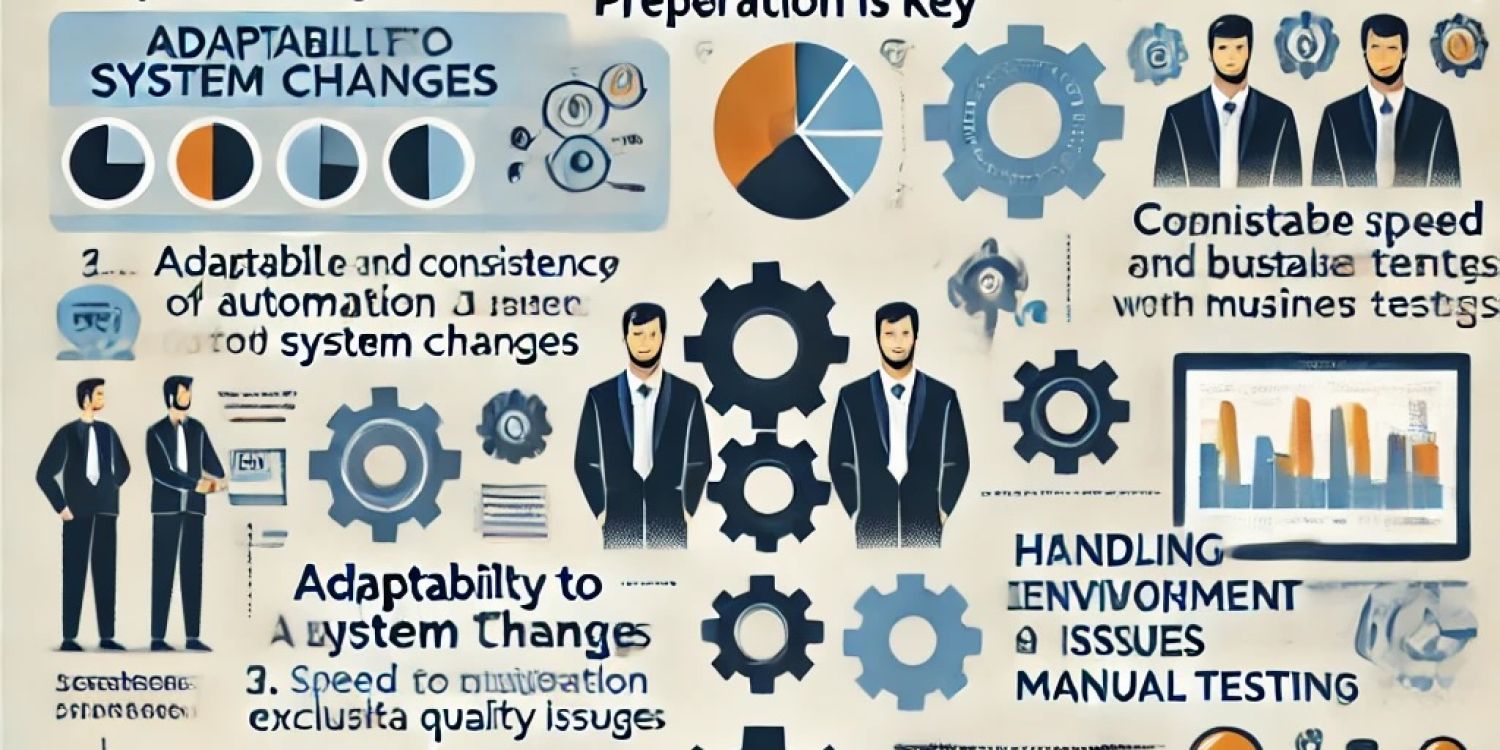
Automated regression testing: experiences and findings
Automated regression testing is an essential method for teams that need to manage software updates and system changes on a regular basis. Automated testing offers the advantage of reducing time-consuming, repetitive tasks, enabling quick feedback and increasing the consistency of test results. The following findings are based on experience from current regression test automation projects and offer some valuable tips for successful implementation.
Thorough preparation as a success factor
Careful preparation forms the basis for the success of automated tests. As early as the planning phase, it is crucial that the test cases are precisely defined and prepared in order to ensure reusability. In particular, the preparation of test data and the clear definition of scenarios significantly improve the reliability of test results. As automated tests do not require the experience of a user, it is all the more important that all test data is provided consistently and systematically to ensure reliable results.
Flexibility in the face of system changes
A major challenge arises when automated test cases are used in different system environments (test / pre-production). The existing automated tests and configurations often require customisation. This experience emphasised the need for automation solutions to be flexible. Modular tests and customisable scripts allow for faster and smoother adaptation when the system environment changes. Such customisations help to avoid unnecessary delays and errors that can result from incompatibilities.
Comparison of manual and automated tests
Due to their speed and scalability, automated tests offer significant advantages over manual tests, which are slower and more susceptible to deviations. However, automated tests reach their limits when human interpretation or subjective evaluation is required, such as when assessing screen output or user interfaces. It is therefore advisable to automate routine tasks and tests that deliver clearly defined results, while tasks that require experience and interpretation are better tested manually.
Consistency of the test environment and test data as a basis
A stable test environment and consistent test data are crucial for the success of automated tests. Without this basis, neither automated nor manual tests deliver reliable results. Setting up exclusive data ranges and a stable environment that mirrors production conditions as closely as possible ensures that the test results reflect the actual performance of the system and are not influenced by fluctuating environmental conditions.
Dealing with data quality problems
A common problem with automated tests is faulty data that leads to incorrect test results and is not due to system errors, but to deficiencies in the test preparation. This in turn emphasises the importance of careful preparation of exclusive test data. Automated tools can support this by preparing the data for each test run in a targeted and precise manner to ensure high quality and relevance of the data.
Cooperation with the specialist departments
Close cooperation with the specialist departments in the definition and preparation of test cases increases the acceptance and benefits of automation. If the specialist departments are involved in the creation of the test cases at an early stage, the test procedures can be better tailored to the real requirements. This not only leads to more precise test results, but also increases confidence in the results of the automated tests, as the specialist departments can better understand the test cases.
Clear responsibilities and future planning
For the sustainable implementation of automated tests, it is important to clearly define responsibilities. It should be determined who will be responsible for the maintenance and further development of the tests in the long term. As the frequency of regression tests will increase, especially with regard to cloud-based system landscapes, it is necessary to formalise future testing and carefully plan the expansion of the test portfolio in order to meet the ever-increasing requirements.
Conclusion
Automated regression testing offers enormous advantages for quality assurance, but success depends on a structured approach, adaptability and a clear allocation of roles. In particular, the clear definition of responsibilities is crucial: who controls the test process, who ensures the quality of the test data, and who is responsible for maintaining and updating the test automation? Clearly assigning these tasks minimises delays and ensures that all team members know their role in test management and work together to achieve the project’s goals. With a structured approach, stable test data and consistent collaboration between those involved, automated testing can become a mainstay of software quality assurance and help companies to build and operate complex system landscapes efficiently and reliably.